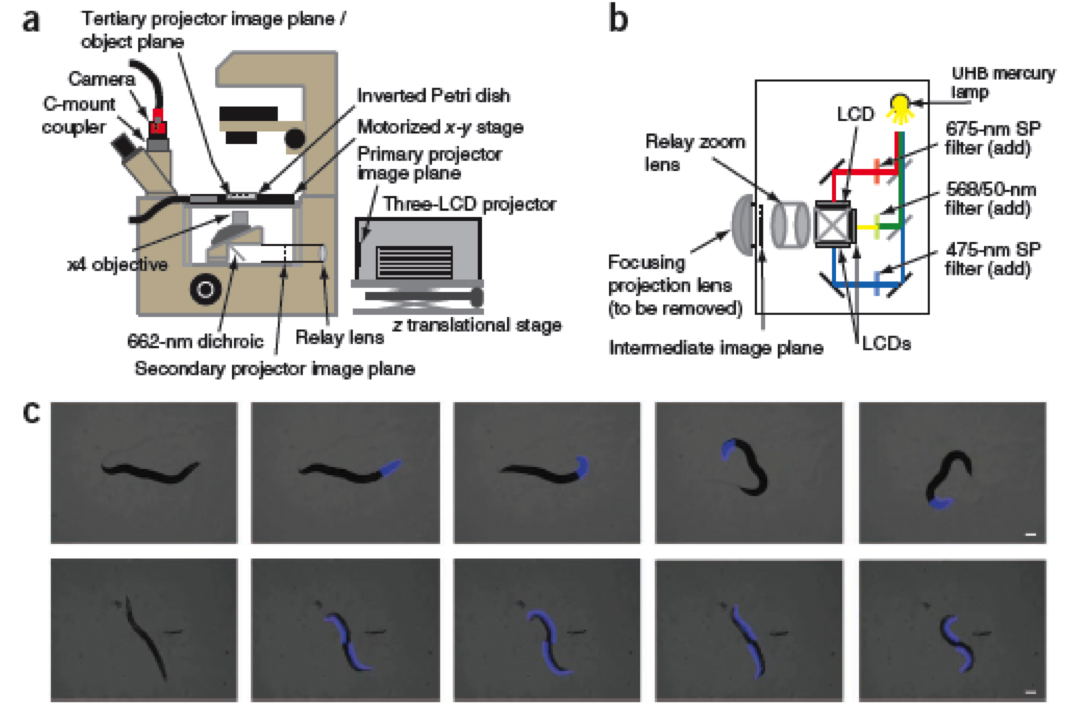I'm back, after an extended hiatus due to my big move to Chicago to begin grad school. I’ve been pummeled by work for the past month, so I’ll keep this one short and sweet.
Recently, in NatureMethods, Stirman et al. (2011) designed a clever optical set-up, using custom modifications to a commercially available Hitachi 3-LCD projector (see below) to perturb microscopic light-sensitive samples with a high degree of precision. Using the software program LabView, they programed the microscope stage and the projector to track a moving nematode while shining light on a defined patch of the worm’s surface. This tool is two orders of magnitude cheaper than current conventional systems, which are available forthis same type of work. This levels the playing field for labs with limited resources by allowing them access to this cutting-edge methodology.

Figure 1 (a,b and c) from Stirman et al., 2011. Pannels a an b show the optical set up for the microscope and the projector. Pannel c shows different illumination schemes that were developed for manipulating light-sensitive nematodes.
My biophysical colleagues and I are attempting to build ourown custom version of the optical set-up in Stirman et al. (2011) and engineer new strains of optogenetically sensitive mutant worms. While this is part of a required lab course, we plan to run new experiments that can be turned (fingers crossed) into a publication. Really, we just want to make worms dance. Our ultimate success would be to choreograph a music video of “Bad Romance” by Lady Gaga, using an all-nematodecast. Stay tuned, science fans.
Stirman, J., Crane, M., Husson, S., Wabnig, S., Schultheis, C., Gottschalk, A.,&Lu, H. (2011). Real-time multimodal optical control of neurons and muscles in freely behaving Caenorhabditis elegans Nature Methods, 8 (2), 153-158 DOI: 10.1038/nmeth.1555


